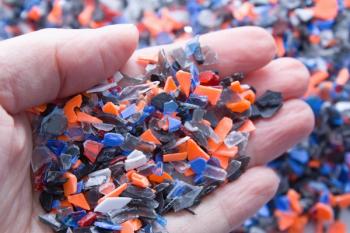
Detecting Cadmium in Marine Phytoplankton Using Single-Cell Inductively Coupled Plasma Mass Spectrometry
Using single-cell inductively coupled plasma mass spectrometry (SC-ICP-MS), scientists from Kanazawa, Japan created a new method for detecting cadmium in marine phytoplankton.
Using single cell inductively coupled plasma mass spectrometry (SC-ICP-MS), scientists form Kanazawa, Japan created a new method for detecting cadmium in marine phytoplankton. Their work was published in Spectrochimica Acta Part B: Atomic Spectroscopy (1).
Recent studies have reported an uptake in heavy metals by phytoplankton and their cells. Acid digestion for sample preparation is the most common method for detecting intracellular metals, though data from this method has certain limitations. Namely, these experiments only measure the intracellular cadmium (Cd) content of culture populations, meaning that only the average metal content in all cells can be obtained. Cell changes and their average values do not represent the intracellular value of each individual cell.
To address this, a new detection method, single cell inductively coupled plasma mass spectrometry (SC-ICP-MS) was developed. According to the scientists, this method has high sensitivity, allowing for the analysis of extremely trace elements. SC-ICP-MS has been used to analyze various types of single-cell systems, including bacteria, yeast, and cancer cells. By directly analyzing cell suspension fed by pumps, a single cell can be analyzed internally with short residence time, thus avoiding simultaneous detection of multiple cells.
For this study, the scientists used SC-ICP-MS to analyze cadmium content in marine phytoplankton cells. This was previously impossible due to high concentrations of interfering elements (Na+, K+) in seawater. For this system, the team removed the supernatant through centrifugal separation, replacing the culture media of three species, P. parvum, O. viridis, and E. gynnastica, with non-metallic salt solutions, namely (NH4)2SO4 and NH4Cl. Cell images were also studied at different concentrations of replacement solutions, to check for ruptured cells stemming from changes in osmotic pressure.
It was observed that a good number of cells ruptured at low concentrations of the non-metallic salt solutions, but they did maintain integrity between 0.6 and 0.8 M solutions. These surviving cells were successfully determined using SC-ICP-MS, and they showed increased presences of high cadmium-containing cells when the phytoplankton were in high-cadmium-concentration mediums. Based on their findings, the scientists concluded that (NH4)2SO4 and NH4Cl can be suitable replacement solutions for the determination of marine phytoplankton using SC-ICP-MS. With that said, it is believed that different species of marine phytoplankton could have different levels of compatibility with these solutions, implying that more research into this phenomenon should be done.
Reference
(1) Zai, Y.; Wong, K. H.; Fujizawa, S.; Ishikawa, A.; Li, M.; Mashio, A. S.; Hasegawa, H. Development of a New Detection Method for Cadmium in Marine Phytoplankton Based on Single Cell Inductively Coupled Plasma Mass Spectrometry. Spectrochim. Acta Part B At. Spectrosc. 2023, 209, 106801. DOI:
Newsletter
Get essential updates on the latest spectroscopy technologies, regulatory standards, and best practices—subscribe today to Spectroscopy.





